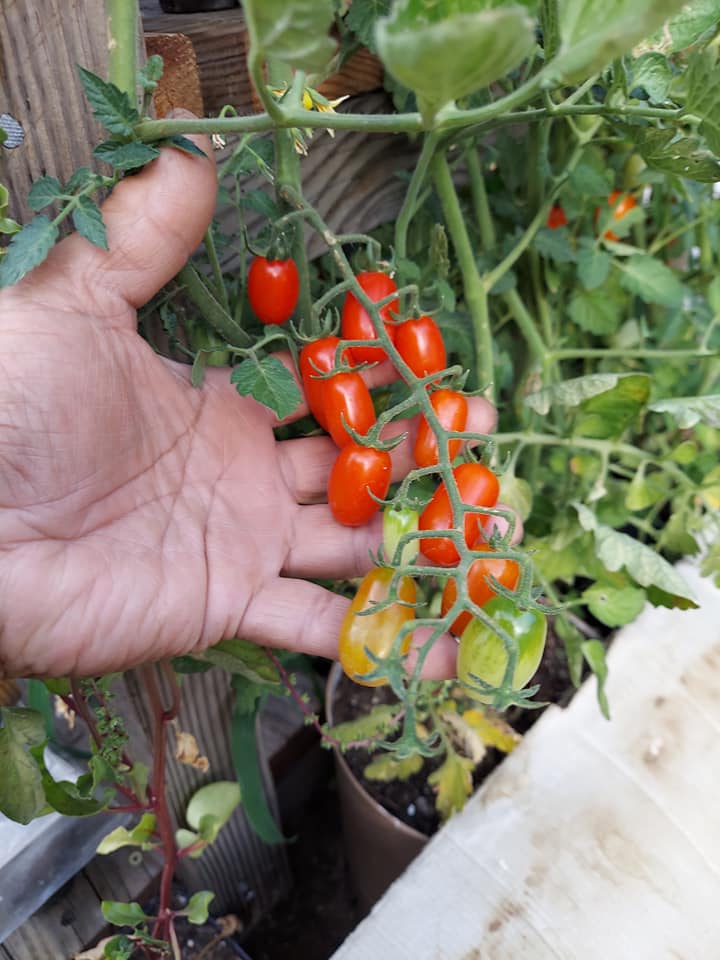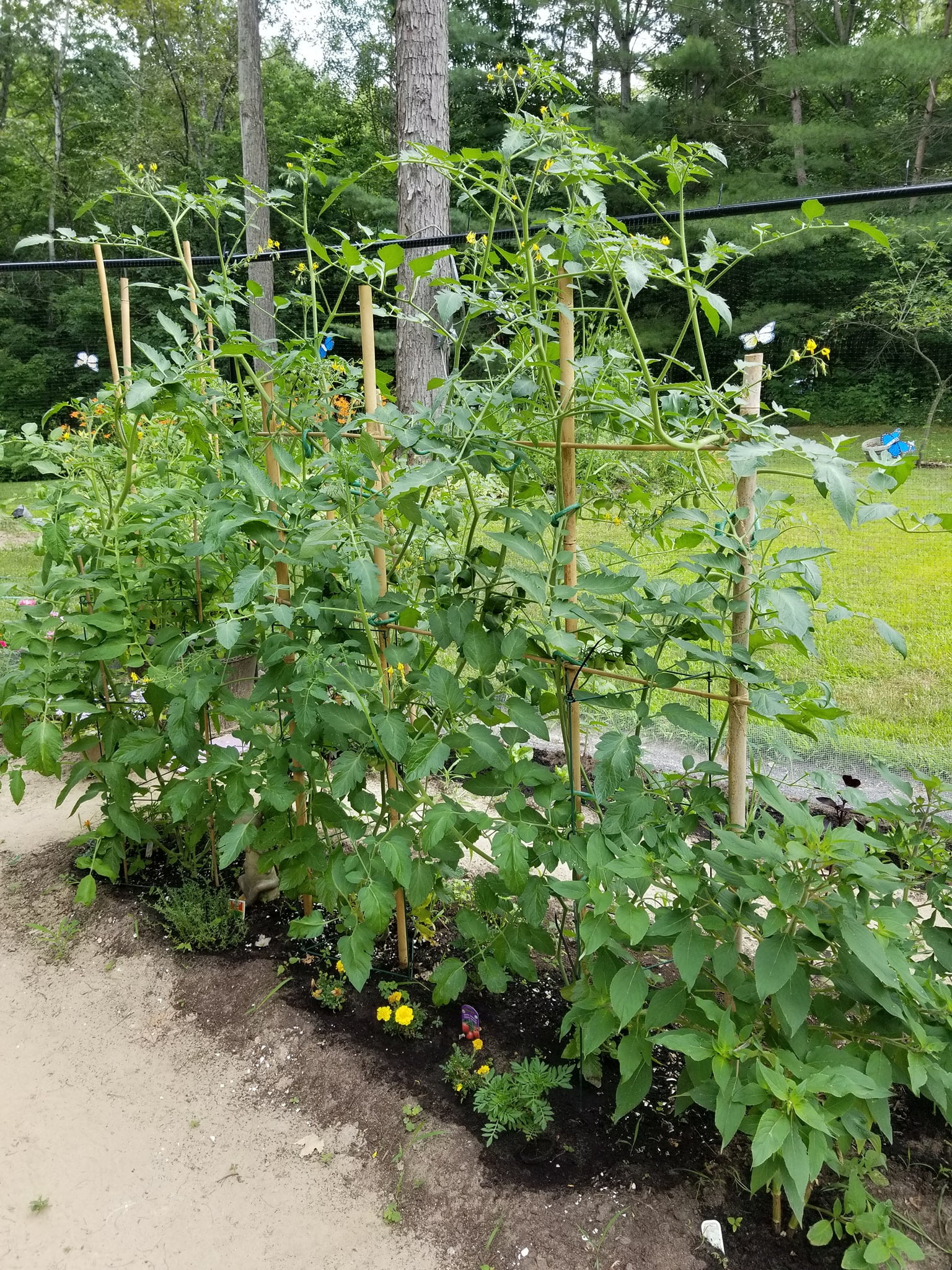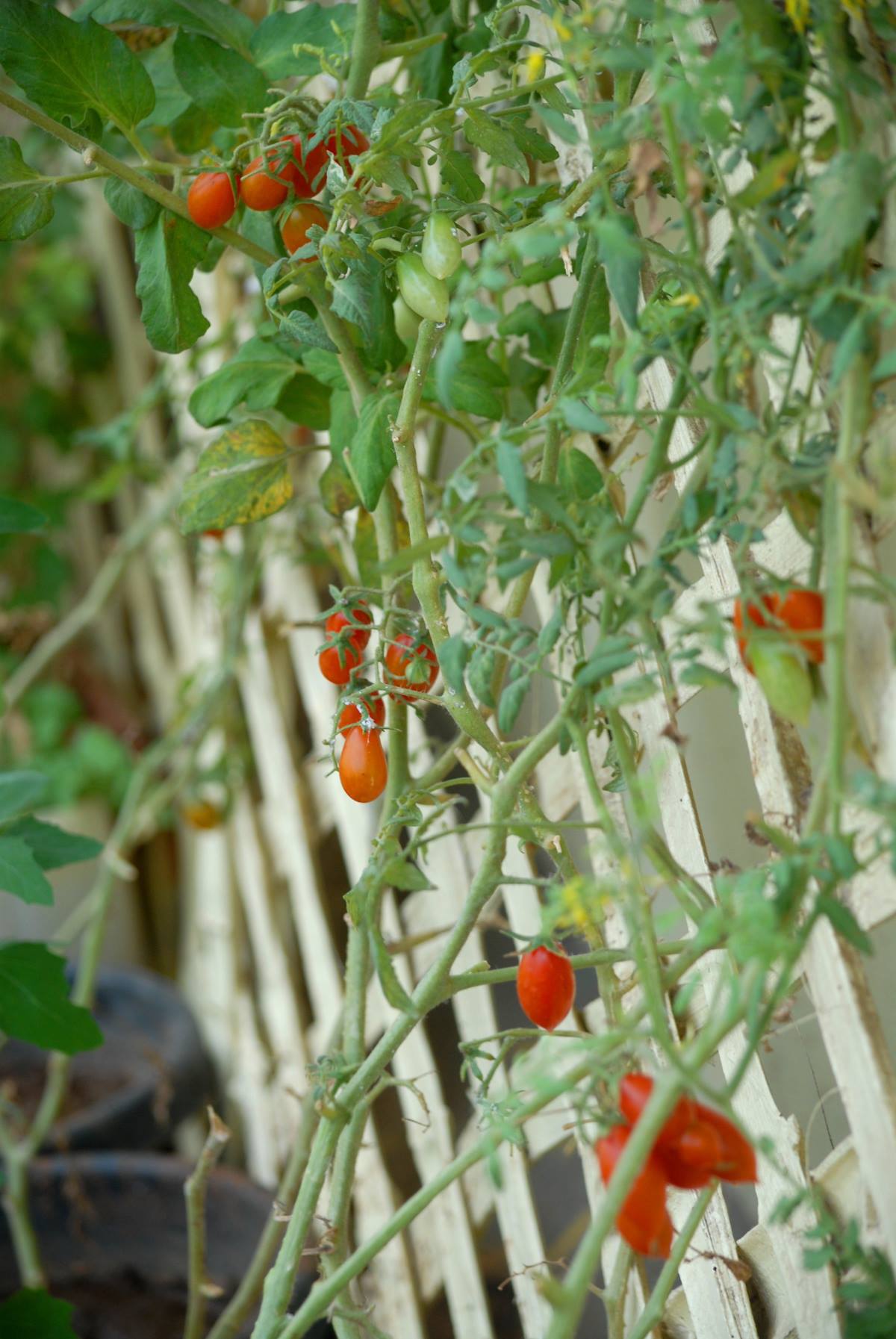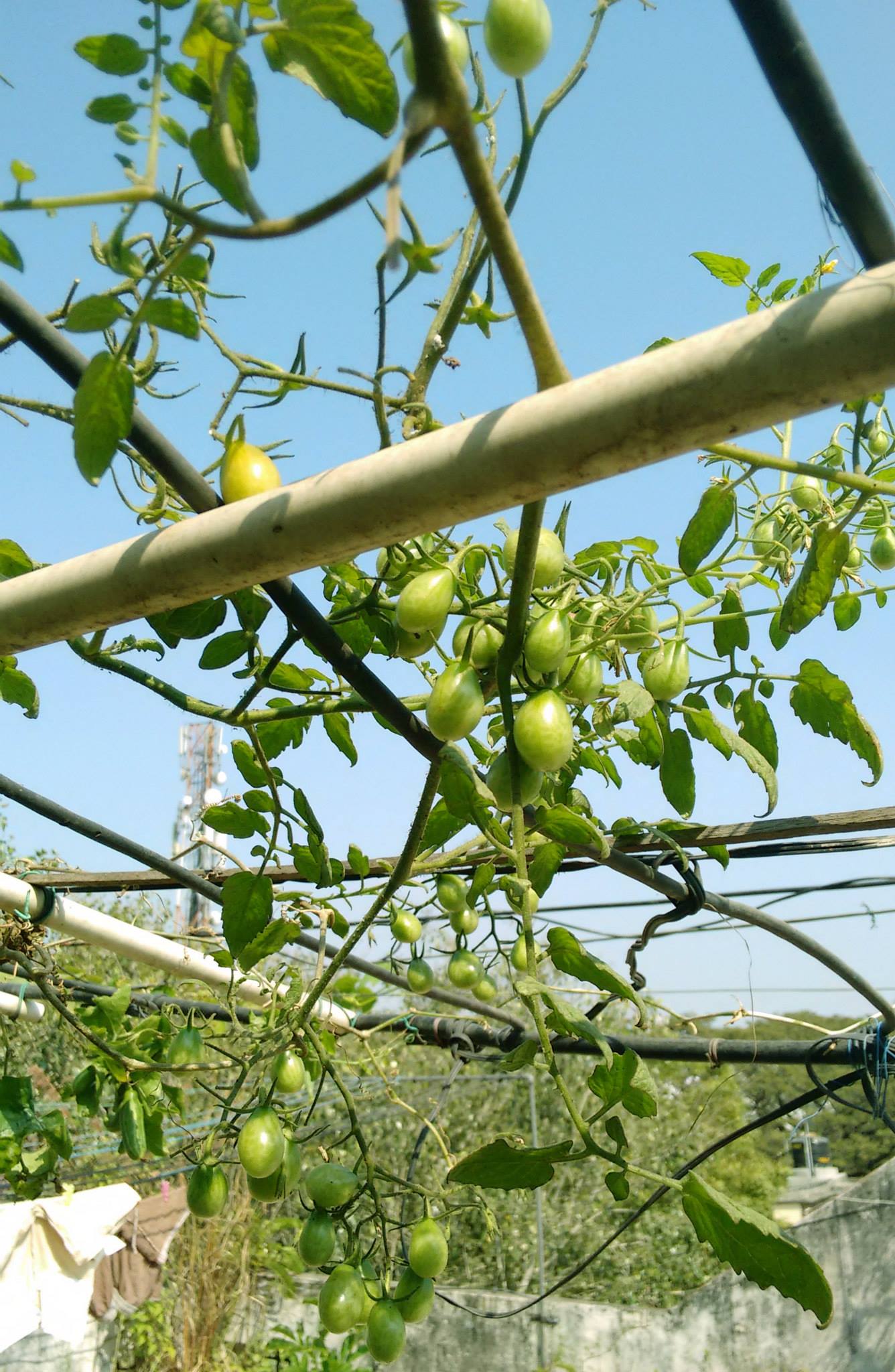
Hey there, green thumbs and tomato enthusiasts! We’re diving deep into the vine-covered world of grape tomatoes to answer the burning question: Do grape tomatoes need a trellis? If you’re a tomato aficionado, you know that each variety comes with its quirks, and grape tomatoes are no exception. They’re the pop of sweetness in your salads, the burst of flavor in your sauces, and the stars of your veggie garden show. But before we start brainstorming a mini Hollywood for your tomatoes, let’s tackle the “trellis talk” with some expert insights and garden wisdom.
Table of Contents
Do Grape Tomatoes Need a Trellis?
Grape tomatoes – those plump, juicy jewels that adorn your garden – bring a burst of sweetness to your culinary creations. But are these little wonders as independent as they seem, or do grape tomatoes need a trellis for that extra “oomph” in their growth journey? Hold onto your gardening gloves, because we’re about to uncover the truth behind this garden enigma.
The Case for Trellising Grape Tomatoes

Picture this: your grape tomato plants stretching towards the sun, their vines laden with clusters of tempting, bite-sized fruits. Now, let’s address the question on every gardener’s mind: Do grape tomatoes need a trellis, or can they fend for themselves?
The Benefits of Trellising Grape Tomatoes
Trellising grape tomato vines brings a bouquet of benefits to your garden. Think of it as rolling out the red carpet for your tomatoes, giving them the VIP treatment they deserve. Let’s dive into the delightful advantages that come with this garden-savvy choice:
1. Vertical Victory: Imagine your grape tomato plants waving hello to the sun as they climb their trellis. By providing vertical support, you’re creating a tomato skyscraper that optimizes space and sunlight exposure. This means more efficient photosynthesis, which translates to healthier plants and tastier tomatoes.
2. Disease Defense: A trellis isn’t just a fashionable accessory; it’s your grape tomatoes’ bodyguard against pesky diseases. Elevating the vines prevents them from touching the ground, reducing the risk of soil-borne diseases and fungal infections. Goodbye, damp and disease-prone environment; hello, elevated immunity!
3. Easy Harvesting Dance: Picture this: you walk into your garden, and your grape tomatoes are hanging at the perfect plucking height, like nature’s ornaments. With trellised vines, harvesting becomes a joyful dance – no more bending, no more contorting. Those clusters of juicy delights are within arm’s reach, ready to adorn your culinary creations.
4. Bountiful Airflow: Grape tomatoes love a good breeze – it’s like a spa day for their leaves. Trellised plants enjoy improved airflow, reducing humidity and thwarting the spread of fungal diseases. Imagine the breeze whispering sweet nothings to your tomatoes, ensuring they remain robust and disease-free.
5. Aesthetics, Anyone? Let’s not forget the aesthetics – a trellis adds a touch of elegance to your garden space. The interplay of vertical vines and supporting structure is a sight to behold, turning your tomato patch into a visual masterpiece. Plus, who can resist the charm of a well-organized and beautifully trellised garden?
So, when you’re pondering whether to trellis or not to trellis, keep these enticing benefits in mind. It’s not just about supporting your grape tomato vines; it’s about elevating your gardening game and reaping the delicious rewards of a thriving tomato harvest.
The Unique Way Grape Tomatoes Grow
Now, let’s look at things from a different angle – think of it as seeing grape tomatoes in their natural element. These plants have a kind of “I can handle it” attitude when it comes to not using a trellis.
Natural Ground Growth:
- Ground Support: Grape tomato vines can be quite sturdy on their own, sprawling along the ground as they please. This can be advantageous in certain settings, as the plants have more room to spread out.
- Minimalist Marvel: If you’re a fan of the wild and rustic look, letting your grape tomatoes roam freely might just be your gardening nirvana. No trellis means no constraints, allowing these vines to take on a life of their own.
Expert Opinions on Trellising Grape Tomatoes

The Pro-Trellis Viewpoint: Experienced gardeners often advise using trellises for grape tomatoes as a smart move to enhance your harvest and keep your plants thriving. This approach involves training the vines to grow vertically along the trellis, which comes with several benefits:
- Higher Yields: By training grape tomato vines to climb a trellis, you encourage more upward growth. This can result in a higher yield of tomatoes compared to letting the plants sprawl on the ground.
- Less Fruit Rot: Elevating the vines helps keep the tomatoes off the ground, reducing the risk of fruit rot. When tomatoes rest directly on the soil, they can easily rot due to moisture and contact with the ground.
- Pollinator-Friendly: Trellising can also make it easier for pollinators like bees to access the flowers. With more open space and better visibility, pollinators can efficiently transfer pollen, leading to improved fruit set and development.
The Carefree Approach: On the other hand, there’s a group of gardeners who believe in taking a more relaxed approach to grape tomatoes, allowing them to sprawl naturally without the support of trellises. This approach has its own set of advantages:
- Air Circulation: Letting grape tomato plants spread out on the ground allows for better air circulation around the foliage. Improved airflow can help prevent the development of fungal diseases, which can be a concern in more humid conditions.
- Less Disease Pressure: Proponents of the free-spirited approach argue that the extra space between plants reduces the likelihood of diseases spreading from one plant to another. When plants are densely packed, diseases can spread more easily.
- Less Maintenance: Allowing grape tomatoes to sprawl naturally can also mean less maintenance. There’s no need to tie or train the vines onto a trellis, which can save time and effort during the growing season.
Ultimately, the decision to use a trellis or let grape tomatoes grow freely depends on your gardening style, space availability, and local climate conditions. Both approaches have their merits, and it’s important to consider what aligns best with your goals and preferences. Whether you opt for the structured support of a trellis or the laissez-faire charm of ground growth, the key is to create an environment where your grape tomatoes can flourish and yield delicious, plump fruits.
Finding a Middle Ground – Balancing Both Sides
Gardening in Shades of Gray: The world of gardening isn’t always cut and dry. Sometimes, finding a compromise is the key to success.
A Partial Support Option: Instead of going all-in with a traditional trellis, consider a middle-of-the-road approach. Stakes or cages can provide some level of support to your grape tomato plants without completely dictating their growth.
Switching It Up: Another approach is to switch between using a trellis and letting the plants sprawl naturally. This way, you’re offering your grape tomatoes the best of both worlds. In one season, they get to stretch and climb, while in the next, they can spread out freely. Think of it as a gardening rhythm, where variety adds spice to your garden.
Why Partial Support? Using stakes or cages instead of a full trellis gives your grape tomatoes a helping hand while still allowing them some flexibility. It’s like giving a nudge in the right direction without putting them in a tight corner.
The Beauty of Alternating: Rotating between trellising and non-trellising seasons has its advantages. When your grape tomatoes climb, they get the benefits of vertical growth – better airflow and easier pollination. On the other hand, when they sprawl, they can take advantage of the ground space and its unique advantages.
Considerations for Alternating: Keep in mind that this approach requires a bit more planning and effort. You’ll need to adjust your gardening strategy each season. But the payoff can be well worth it – your grape tomatoes will experience the best of both setups, leading to potentially healthier plants and a more diverse harvest.
The Bottom Line: Gardening is about experimenting and finding what works best for your specific situation. Whether you choose to provide partial support or alternate between trellising and non-trellising, remember that your grape tomatoes are adaptable. They can thrive in various setups, as long as you’re attentive to their needs and growth patterns. So, embrace the shades of gray and create a gardening harmony that suits both your plants and your preferences.
If You Prefer Using a Trellis: Practical Tips

Selecting the Right Support: If you’re leaning towards trellising your grape tomato plants, here are some down-to-earth suggestions to help you along the way:
1. Making a Wise Choice: When it comes to trellises, sturdiness is key. Look for a trellis that can handle the weight of your grape tomato vines as they grow and bear fruit. A sturdy support system ensures that your trellised tomatoes stand tall and strong.
2. Guiding the Growth: As your grape tomato vines start to climb, it’s like coaching them in a friendly race. Gently guide the vines to follow the trellis pattern. This not only prevents them from getting tangled but also encourages upward growth. Imagine it as helping your tomato plants find their way up the garden ladder.
3. Tending to Pruning: Regular pruning is like giving your grape tomatoes a well-deserved spa day. Remove excess leaves and any lateral shoots that might divert energy away from fruit production. This pruning practice helps the plant direct its efforts towards growing juicy, plump tomatoes. It’s like decluttering and focusing on the main event – the harvest!
4. Mind the Space: Remember that trellised grape tomato plants need space to climb and spread out. Ensure that the trellis is installed at a suitable distance from other plants to avoid overcrowding. This ensures that each plant has enough room to thrive and enjoy its time in the sun.
5. Consistent Monitoring: Trellising requires a bit of ongoing attention. Keep an eye on the vines and make adjustments as needed to guide their growth. It’s like being a supportive mentor, always ready to lend a helping hand when your tomato plants need a boost.
6. Celebration of Success: As your grape tomatoes climb and flourish on the trellis, celebrate each milestone. Share the joy of watching your plants thrive with friends and fellow gardeners. After all, the journey from planting to harvesting is a journey worth sharing.
Trellising your grape tomatoes is a proactive approach that offers a host of benefits. It’s like creating a tailored growth environment for your plants. By following these practical pointers, you’ll be well on your way to enjoying a bountiful harvest of delicious grape tomatoes that proudly stand tall on their trellises.
If You Prefer Ground Growth: Effective Methods
Caring for Ground-Grown Grape Tomatoes: If you’re leaning towards letting your grape tomato plants sprawl on the ground, these practical techniques will help you nurture their growth:
1. Mulch Management: Imagine it as tucking your grape tomatoes in with a cozy blanket. Spread a layer of mulch around the base of your plants. This serves two purposes – it helps control pesky weeds from taking over and maintains consistent soil moisture. Mulch acts like a protective shield, ensuring your plants stay comfortable and well-nourished.
2. Regular Vigilance: Just like keeping an eye on your favorite spot in the garden, stay attentive to your sprawling vines. Check for any signs of tangling or disease. Untangle any vines that might have gone astray and remove any unhealthy leaves promptly. It’s like giving your plants a friendly check-up to ensure they’re on the right track.
3. Promote Airflow: Allow your grape tomato plants to breathe easy. Gently adjust the foliage from time to time to ensure proper airflow. Good air circulation reduces the risk of fungal diseases and keeps your plants healthy. Think of it as giving them a breath of fresh air – they’ll appreciate it.
4. Timely Harvest: Keep a close watch on your ground-grown grape tomatoes as they start to ripen. Harvest them promptly when they’re ready. Plucking ripe tomatoes helps prevent overripe fruit from attracting pests and disease. It’s like enjoying the sweet rewards of your labor at just the right moment.
5. Give Them Space: As your plants spread out, make sure they have enough room to thrive. Avoid overcrowding by planting your grape tomatoes at an appropriate distance from one another. This prevents competition for resources and ensures each plant gets its fair share of sunlight and nutrients.
6. Sharing the Joy: Embrace the beauty of ground growth and share your gardening journey with fellow enthusiasts. Celebrate the unique charm of letting your grape tomato plants sprawl naturally and enjoy the fruits of your labor together.
Opting for ground growth for your grape tomatoes is a choice that offers simplicity and a touch of natural beauty. By following these top techniques, you’ll be providing the care and attention your plants need to thrive on the ground. From mulching to vigilant checking, your plants will flourish, and you’ll reap the benefits of plump and delicious grape tomatoes.
Conclusion
So, there you have it – the grand unveiling of whether grape tomatoes need a trellis. It turns out, these little gems are quite versatile! Whether you opt for the structured elegance of a trellis or the untamed beauty of ground growth, the key lies in understanding your garden’s needs and your tomatoes’ temperament. So, go ahead, pick your approach, and let those grape tomatoes thrive in your garden haven, trellis or no trellis – the choice is yours, gardening virtuoso!
